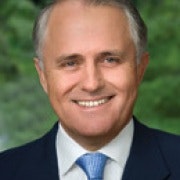Labor's NBN own goal
Communications Minister Stephen Conroy has published one of the more bizarre contributions to the broadband debate in Australia.
One of Senator Conroy's techniques is to avoid the real issue about the NBN which is huge costs and long delays in the rollout. The fact that people use the NBN is hardly surprising - nobody is suggesting that there is no demand for broadband at all. The argument against his approach to building the NBN is that it is costing far too much and taking far too long than a more rational strategy would take.
Around the world, the key challenge for fibre to the premises (FTTP) rollouts is that most consumers do not currently need the very high speeds it makes available, and are therefore not willing to pay the very high prices required for such networks to earn a commercial return on invested capital.
As a result, in most markets (other than a few outliers where the cost of deploying FTTP is unusually low for country-specific reasons such as high population density) take-up has been low and current prices are not high enough to generate a commercial return on the FTTP installed.
Rather than admit FTTP take-up has been weak everywhere, including Australia, Senator Conroy argues the NBN fibre rollout is a raging success because demand so far is not quite as weak as elsewhere (over a tiny sample size of households in the NBN's hand-picked initial markets).
He nowhere admits the key reason for this is the cold harsh reality that his anti-competitive broadband policy, unique in the world, involves closing down rival fixed line networks once the NBN has been rolled out. If consumers in these areas want a fixed line service, the NBN monopoly is going to be their only choice. On average the copper will be decommissioned around 18 months after the fibre rollout.
In the other markets he cites, the FTTP networks have to compete with other wireline broadband services including extensive cable (HFC) networks and often ADSL as well.
In this light, is a penetration rate of 25 per cent of households after 12 months of NBN fibre availability really such a triumph? Isn't the real story that after a year (and a deluge of taxpayer-funded advertising of the NBN) 75 per cent of users in these districts haven't been persuaded that fibre offers anything worth switching over to ahead of the last possible moment when they have no other choice?
And his frank admission that around the world the demand for fibre has so far not justified widespread investment – other than where costs are very low such as in Hong Kong and Singapore – is a spectacular own goal.
Senator Conroy is somehow trying to make the argument that what makes Australia unique is not the cost of supply – it's the strength of our demand. Remember that as of September 30, take-up on the NBN's fibre as a whole was 12.2 per cent of households passed.
Of course, we could remind Senator Conroy of unique factors specific to the Australian situation which should have led to even higher uptake, such as:
- A huge marketing budget. In two years to June 2013 the Government has committed (external to the NBN Co's own budget) $40 million to advertising on the NBN – almost $6000 for each household signed up to the NBN's fibre product. NBN Co itself spent $11.2 million on advertising in 2011-12 alone.
- Free ‘trial periods' where the product was given to consumers free of charge.
- As mentioned, the stated intention that at a specified date, all alternative fixed-line networks will be switched off.
But I welcome Senator Conroy's first foray into noticing broadband deployments around the world. His contribution is the type of analysis that would have been useful three years ago, at the time in early 2009 when he should have committed to a cost benefit analysis of each of the options for achieving a broadband upgrade, rather than committing to a particular technical solution (GPON FTTP) regardless of cost.
I can't help but note that he drew the wrong conclusions from some of the statistics he cited, however. For instance, he quoted well respected telco analyst Rob Kenny for take-up in Europe (I would refer Senator Conroy to a particularly strong piece of work completed by Robert Kenny online here).
Perhaps if he had read the full post, he would have come across the main point that Kenny was making:
“This analysis does suggest that unless there is some radical change, FTTH is something of a sideshow for the EU's superfast target. If policy makers have serious ambition to meet that target, they will need to focus on cable or FTTC solutions.”
This type of cherry-picking is not new to Senator Conroy or the NBN. Last week an NBN spokesman wrote:
“We are also happy with the rate of activations to date. For instance, it took the UK four years to achieve an FTTH/B take-up rate of 2 per cent of homes passed.”
I have not been able to find any source which supports the information the NBN spokesman was referring to – however, it should be noted there has been no substantial FTTH/B rollout in the UK at all. OECD data shows that fibre counts for around 1.9 per cent of total connections in the UK Perhaps the NBN can provide a reference to support this claim.
However, the biggest problem in Senator Conroy's argument is not the international experience – it's the ambitious targets he has set to ensure the NBN is financially viable. A quick look at the forecast take-up rates in the 2010 and 2012 corporate plans makes this point quite clear.

Malcolm Turnbull is the Member for Wentworth and Shadow Minister for Communications and Broadband. This piece was first published on Business Spectator. Republished with permission.













